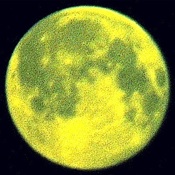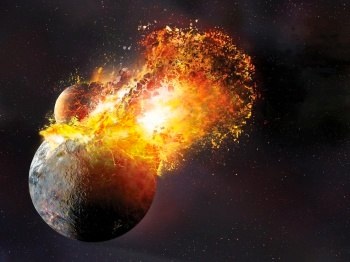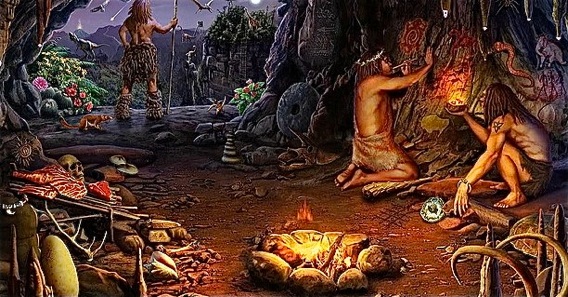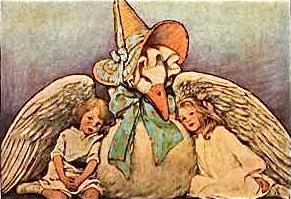The Moon and Green Cheese
John W. Pinkerton
oldjwpinkerton@gmail.com
The moon is a far away place; I’ve never been there, but I’ve seen it from a distance, 238,855 miles to be precise. Of course I didn’t measure the distance myself, but that’s what I’ve been told…a long way.
Two blondes in California were sitting on a bench at night talking, and one blonde says to the other, "Which do you think is farther away, Florida or the moon?" The other blonde turns and says, "Helloooooooooo, can you see Florida?"
I don’t know if I’d want to go there myself, but it’s reassuring that others have been there and it is possible. When I was a kid in the 40’s and 50’s, going to the moon was out of the question.
However, in 1969 Neil Armstrong stepped onto the surface of the moon and uttered on behalf of everyone, “One small step for man, one giant leap for mankind.”
It was a big day for…Hell, for everyone. At that moment all things were possible.
When Apollo Mission Astronaut Neil Armstrong first walked on the moon, he not only gave his famous "One small step…” statement, he made the enigmatic remark, "Good luck, Mr. Gorsky." Although he was often questioned about the
remark, he never responded until 1996. The delayed response was prompted
by the passing of the Gorskys who had been Armstrong’s neighbors when he was
a kid. Being that a baseball had been hit into the Gorsky’s yard, Neil went to
retrieve it when he overheard Mrs. Gorsky shouting at Mr. Gorsky, "Oral Sex!
You want oral sex? You'll get oral sex when the kid next door walks on the moon!”
Yes, a big day for everyone.
(A friend recently questioned the veracity of the above incident; I went back and did a little checking. Sure enough, he was right: the story is an urban legend. But, damn it, it’s too good of a story not to be true.)
Of course, since then things haven’t gone as swimmingly as we might have anticipated at that moment; if you’ve lived through the last fifty-five years, you catch my drift.
Well, at least we found out that the moon isn’t made of green cheese. Green cheese? Where did that idea come from. From fables that a
simpleton who sees a reflection of the Moon in water mistakes it for a round cheese wheel. Actually “green cheese” refers to a young cheese, not the color green. Anyway, we found that the surface of the moon is made up of concrete-like regolith that has been ground into fine pieces by asteroids and meteorites. I know it’s wrong, but I like the green cheese thought better.
Q. What do you get when you take green cheese and divide its circumference by its diameter?
A. Moon pi.
We depend on the moon---sliver, half, or full---to always be available, but that wasn’t always true. When the earth was .2 billion years old, it had no moon,
but an object about the size of Mars blundered into the earth, sheered off a lot of it which took up orbit around the earth coalescing into what we now call the moon. It’s my understanding that it was a lot closer to the earth in the beginning. Presently it’s moving away from the earth at a rate of approximately 1.5 inches each year. In the last 65 million years, it has only moved 1544 miles further away from the earth, so I guess the moon didn’t look much different to early man.
Q. What was the name of the first satellite to orbit the Earth?
A. The moon.
In addition to creating the tides, most scientists admit that the gravitational pull of the moon could possibly have some effect on the behavior of folks,
but they claim that the full moon myth is bunk. They claim it doesn’t make people “looney.” (“Looney is based on the word “lunar.”) However, you’d be hard pressed to find someone who doesn’t believe that people’s behavior during a full moon is different. Ask any teacher, policeman, fireman, or anyone else who works with the public.
“I don't know if there are men on the moon, but if there are they must be using the earth as their lunatic asylum.”
George Bernard Shaw
I’m often amused when watching a television program about ancient man when the narrator asks, “How could ancient man know so much about the stars, the planets, and the moon?” My response is simple: no movies, television, or internet. The heavens were the only show in town.
Although I used to read my daily chart in the newspaper, I don’t believe in astrology. Heck, I’m not even sure I believe in astronomy…just joking.
Being that the moon is the largest thing we can see in the sky probably accounts for the ancient religions assigning gods and goddesses to be in charge of it: the Hittites had Arma, the Greeks had Artemis, the Thracians had Bendis, the Aztecs had Coyolxauhqui, the Chinese had Heng-O, the Myans had Ix Chel, the Egyptians had Khons/Khonsu, the Dahomeys (African) had Mawu, the Phrygians of Western Asia Minor had Men, the Greeks had Selene or Luna, the Sumerians had Sin/Nanna, the Japanese had Tsuki-Yomi. I’m sure I’ve left out some, but you get the drift.
I suppose one can tell a lot about a society by what folks sing about. If that’s true, the moon plays a major role in our lives as the following song titles testify: “Defy the Moon,” “Moon and Sun/Sun and Moon,” “Man on the Moon,” “Buicks to the Moon,” “Jealous Moon,” “This Side of the Moon,” “Missouri Moon,” “New Moon,” “Moon Over Madison,” “Moonlight and Skies,” “Where Is the Moon,” “Pale Moon,”
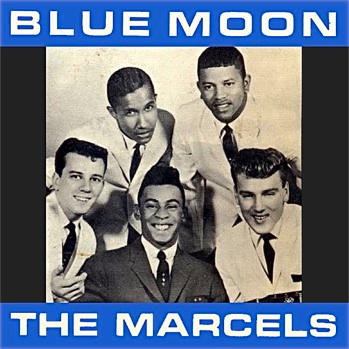
“Sugar Moon,” “It’s Only a Paper Moon,” “Blue Moon,” “Shame on the Moon,” “Indigo Moon,” “Moon River,” “Paper Moon,” “Bad Moon Rising,” “Mister Moon,” “Honky Tonk Moon,” “Just Beyond the Moon,” “I Wish I Was the Moon,” “Shine on Harvest Moon,” “Lying to the Moon,” “Full Moon Full of Love,” “When My Blue Moon Turns to Gold Again,” “Puttin’ People on the Moon,” “Cajun Moon,” “Throwin’ Horseshoes at the Moon,” “No More the Moon Shines on Lorena,” “Moonlight in Vermont,” “Fly Me to the Moon,” “Cruel Moon,” “Moon Song/How High the Moon/Bad Moon Rising,” “Slow Dancing with the Moon,” “Howlin at the Moon,” “Southern Moon,” and “Blue Moon of Kentucky.” Wow! We put a lot of moon into our music. Personally, my favorite is “Blue Moon.” Interpretation of the song varies from
The Marcels’ doo whop version to a fine slow version by the
Blue Jars.
Of course there is a lot of poetry about the moon. Carl Sandburg has “Child Moon”:
The child's wonder
At the old moon
Comes back nightly.
She points her finger
To the far silent yellow thing
Shining through the branches
Filtering on the leaves a golden sand,
Crying with her little tongue, "See the moon!"
And in her bed fading to sleep
With babblings of the moon on her little mouth.
and there is Robert Frost’s “The Freedom of the Moon”:
I've tried the new moon tilted in the air
Above a hazy tree-and-farmhouse cluster
As you might try a jewel in your hair.
I've tried it fine with little breadth of luster,
Alone, or in one ornament combining
With one first-water start almost shining.
I put it shining anywhere I please.
By walking slowly on some evening later,
I've pulled it from a crate of crooked trees,
And brought it over glossy water, greater,
And dropped it in, and seen the image wallow,
The color run, all sorts of wonder follow.
but my favorite is Mother Goose’s “Hey, diddle, diddle”:
Hey, diddle, diddle,
The cat and the fiddle,
The cow jumped over the moon;
The little dog laughed
To see such sport,
And the dish ran away with the spoon.
Well, as you can see, the moon is never far from our minds.
However, there are many interesting facts about the moon of which you may not be aware.
We've all heard of the man in the moon, but what is it? Well, it refers to interpretations of features of the moon resembling the human face or body,
and we all know that men went to the moon, but did you know there really is a man in the moon? Dr. Eugene Shoemaker, a geological surveyor who educated the Apollo astronauts about craters, never made it into space, but after his death, his ashes were placed on board the
Lunar Prospector Spacecraft in 1999 which was crashed into a crater.
Alan Sheppard hit a golf ball nearly a half mile on the moon.
Only 59 percent of the moon's surface is visible from the earth.
If you weigh 140 pounds on earth, you would weigh 23.24 lbs on the moon.
We have a full moon about every 29 days. The second full moon in a single month is called a blue moon. It occurs rarely, thus the phrase “once in a blue moon.”
We only see one side of the moon from earth, but we have seen it, photographed it, and mapped it. In 1968, Appolo 8 astronauts saw the far side of the moon with human eyes.
Q: "Why does the Moon orbit the Earth?"
A: "To get to the other side?"
So whether you’re a space junky, astronomer or astrologist, romantic or just a casual observer, the moon is always there. It’s one of the few things in life we can depend upon.
“The moon is a loyal companion. It never leaves. It’s always there, watching, steadfast, knowing us in our light and dark moments, changing forever just as we do. Every day it’s a different version of itself. Sometimes weak and wan, sometimes strong and full of light. The moon understands what it means to be human. Uncertain. Alone. Cratered by imperfections.”
Tahereh Mafi
enough


